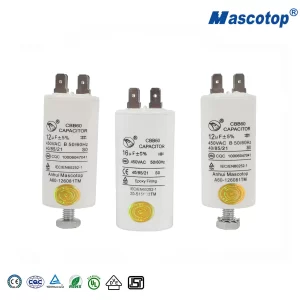
Capacitors are an essential component in many electronic devices, from simple circuits to complex systems. They are used to store and release electrical energy, and they play a critical role in the operation of many electronic devices. Here we will explore the basics of capacitors, including how they work and what they do.
A capacitor is an electronic component that stores electrical energy in an electric field. It consists of two conductive plates separated by a dielectric material. When a voltage is applied to the plates, an electric field is created between them, which stores electrical energy. The amount of energy that a capacitor can store is determined by its capacitance, which is measured in farads.

Table of Contents
ToggleCapacitors work by storing electrical energy in an electric field. When a voltage is applied to the plates of a capacitor, an electric field is created between them. The electric field stores electrical energy, which can be released when the capacitor is discharged. The amount of energy that a capacitor can store is determined by its capacitance, which is determined by the size of the plates and the distance between them.
There are several different types of capacitors, each with its own advantages and disadvantages. The most common types of capacitors include:
- Ceramic capacitors: These are small, inexpensive capacitors that are commonly used in high-frequency applications.
- Electrolytic capacitors: These are larger capacitors that are commonly used in power supply applications.
- Film capacitors: These are capacitors that are made from a thin film of metal and dielectric material. They are commonly used in high-performance applications.
- Tantalum capacitors: These are capacitors that are made from tantalum metal and are commonly used in high-performance applications.
Capacitors are used in a wide range of electronic devices, from simple circuits to complex systems. They are used to store and release electrical energy, and they play a critical role in the operation of many electronic devices. Some common applications of capacitors include:
- Power supply filtering: Capacitors are used to filter out unwanted noise and ripple in power supplies.
- Timing circuits: Capacitors are used in timing circuits to control the frequency and duration of signals.
- Motor starting: Capacitors are used to provide a boost of power to motors when they are starting up.
- Audio filtering: Capacitors are used to filter out unwanted noise and interference in audio circuits.
Capacitors are an essential component in many electronic devices, from simple circuits to complex systems. They are used to store and release electrical energy, and they play a critical role in the operation of many electronic devices. There are several different types of capacitors available, each with its own advantages and disadvantages. Some common applications of capacitors include power supply filtering, timing circuits, motor starting, and audio filtering.
To learn more about capacitors and how they can benefit your electronic devices, visit our website at mtcapacitor.com.